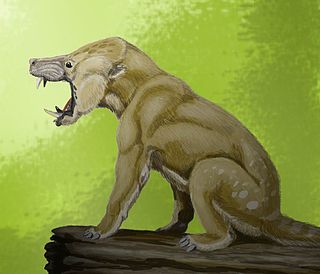
Colorado is a state in the Western United States. It is one of the Mountain states, sharing the Four Corners region with Arizona, New Mexico, and Utah. It is also bordered by Wyoming to the north, Nebraska to the northeast, Kansas to the east, and Oklahoma to the southeast. Colorado is noted for its landscape of mountains, forests, high plains, mesas, canyons, plateaus, rivers, and desert lands. It encompasses most of the Southern Rocky Mountains, as well as the northeastern portion of the Colorado Plateau and the western edge of the Great Plains. Colorado is the eighth most extensive and 21st most populous U.S. state. The United States Census Bureau estimated the population of Colorado at 5,877,610 as of July 1, 2023, a 1.80% increase since the 2020 United States census.

Firs are evergreen coniferous trees belonging to the genus Abies in the family Pinaceae. There are approximately 48–65 extant species, found on mountains throughout much of North and Central America, Eurasia, and North Africa. The genus is most closely related to Keteleeria, a small genus confined to eastern Asia.

Colorado College is a private liberal arts college in Colorado Springs, Colorado. Founded in 1874 by Thomas Nelson Haskell in his daughter's memory, the college offers over 40 majors and 30 minors, and enrolls approximately 2,000 undergraduates at its 90-acre (36 ha) campus.

Meniscoessus is a genus of extinct multituberculates from the Upper Cretaceous Period that lived in North America.

Schinopsis is a genus of South American trees in the family Anacardiaceae, also known by the common names quebracho, quebracho colorado and red quebracho. In Brazil it is known as baraúna or braúna.

The Turonian is, in the ICS' geologic timescale, the second age in the Late Cretaceous Epoch, or a stage in the Upper Cretaceous Series. It spans the time between 93.9 ± 0.8 Ma and 89.8 ± 1 Ma. The Turonian is preceded by the Cenomanian Stage and underlies the Coniacian Stage.

Antrodemus is a dubious genus of theropod dinosaur from the Upper Jurassic, probably the Morrison Formation, of Middle Park, Colorado. It contains one species, Antrodemus valens, first described and named as a species of Poekilopleuron by Joseph Leidy in 1870.

The Colorado Buffaloes football program represents the University of Colorado Boulder in college football at the NCAA Division I FBS level, and is a member of the Big 12 Conference. The team was a charter member of the Big 12 before leaving to join the Pac-12 Conference after the 2010 season. After 13 seasons in the Pac-12, the Buffaloes returned to the Big 12 in 2024. Before joining the Big 12, they were members of the Big Eight Conference. The CU football team has played at Folsom Field since 1924. The Buffs all-time record is 716–520–36 as of the 2022 season. Colorado won the 1990 National Championship. The football program is 27th on the all-time win list and 40th in all-time winning percentage.
Mesadactylus is an extinct genus of pterosaur from the Kimmeridgian-Tithonian-age Upper Jurassic Morrison Formation of Colorado, United States. The genus was named in 1989 by James Jensen and Kevin Padian. The type species is Mesadactylus ornithosphyos.

Theiophytalia is a genus of herbivorous iguanodontian dinosaur from the lower Cretaceous period of Colorado, USA. It contains a single species, T. kerri.
Kepodactylus is an extinct genus of ctenochasmatid pterodactyloid pterosaur from the Kimmeridgian-Tithonian-age Upper Jurassic Morrison Formation of Colorado, United States.
William Alfred Weber was an American botanist and lichenologist. He was Professor Emeritus at the University of Colorado at Boulder and former curator of the University of Colorado Museum Herbarium.

Arctocyonidae is as an extinct family of unspecialized, primitive mammals with more than 20 genera. Animals assigned to this family were most abundant during the Paleocene, but extant from the late Cretaceous to the early Eocene . Like most early mammals, their actual relationships are very difficult to resolve. No Paleocene fossil has been unambiguously assigned to any living order of placental mammals, and many genera resemble each other: generalized robust, not very agile animals with long tails and all-purpose chewing teeth, living in warm closed-canopy forests with many niches left vacant by the K-T extinction.

Periptychidae is a family of Cretaceous-Paleocene placental mammals, known definitively only from North America. The family is part of a radiation of early herbivorous and omnivorous mammals formerly classified in the extinct order "Condylarthra", which may be related to some or all living ungulates. Periptychids are distinguished from other "condylarths" by their teeth, which have swollen premolars and unusual vertical enamel ridges. The family includes both large and small genera, with the larger forms having robust skeletons. Known skeletons of periptychids suggest generalized terrestrial habits.

Hulettia is an extinct genus of ray-finned fish known from United States. This fish genus contains two species, H. americana and H. hawesi.
Paressonodon is an extinct genus of multituberculate which existed in western North America during the end of the Cretaceous period. It contains the species Paressonodon nelsoni. Fossils are known from the Laramie Formation of Colorado and the Lance Formation of Wyoming.

Smitanosaurus is a genus of dicraeosaurid sauropod dinosaur from the Late Jurassic of Colorado. The genus contains one species, S. agilis, originally assigned to the defunct genus Morosaurus.

The 2024 United States presidential election in Colorado took place on Tuesday, November 5, 2024, as part of the 2024 United States presidential election in which all 50 states plus the District of Columbia will participate. Colorado voters will choose electors to represent them in the Electoral College via a popular vote. The state of Colorado has 10 electoral votes in the Electoral College, following reapportionment due to the 2020 United States census in which the state gained a seat.

Tessellatia is an extinct genus of probainognathian cynodont from the Late Triassic Los Colorados Formation of La Rioja, Argentina. The genus contains a single species, T. bonapartei, known from a partial skull.














